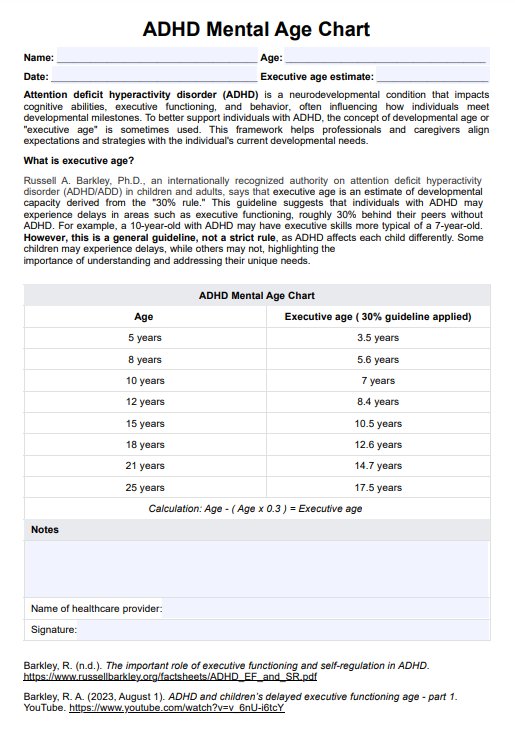The mental age of someone with ADHD can be approximately 30% less than their chronological age, indicating a lag in executive functioning compared to their peers.

ADHD Mental Age Chart
Read our comprehensive ADHD Mental Age Chart, a crucial tool to understand ADHD's impact on developmental abilities and make effective support strategies.
Use Template
ADHD Mental Age Chart Template
Commonly asked questions
The 30% rule for ADHD suggests that individuals with ADHD may have an executive age or mental age that is about 30% less than their actual chronological age, highlighting a delay in specific cognitive skills.
The 10 and 3 rule for ADHD suggests that a 10-year-old with ADHD may have executive functioning skills similar to a 7-year-old (30% less), highlighting the importance of adjusting expectations and strategies accordingly.
EHR and practice management software
Get started for free
*No credit card required
Free
$0/usd
Unlimited clients
Telehealth
1GB of storage
Client portal text
Automated billing and online payments











